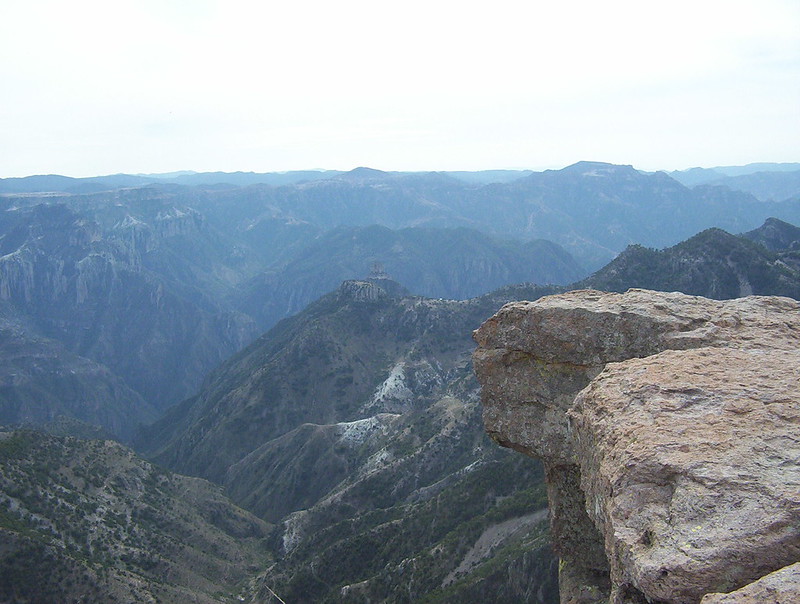Traditional Asian horse sports offer a unique perspective on the connection between equestrian practices and cultural identity. From the fierce competitions of Buzkashi to the skillful artistry of Chogān, these events showcase athletic ability while embodying the values of community and heritage. By exploring the significance of these time-honored traditions, we can gain insights into their role in contemporary society and ponder their future in an ever-evolving world. What might these ancient practices reveal about modern equestrian culture?
Buzkashi – Kok Boru
Buzkashi, also known as Kok Boru, is a traditional Central Asian equestrian sport that highlights the region’s historical and cultural heritage. In this thrilling competition, teams vie to capture a beheaded goat or sheep carcass against the backdrop of vast steppes. The name originates from Farsiboz, meaning ‘goat,’ and kashi, meaning ‘pull,’ reflecting the sport’s primal roots inspired by the hunting instincts of wolves.
Initially a significant part of Turkmen weddings, Buzkashi has evolved throughout Central Asia, resulting in various rules and regional styles while preserving the sport’s core essence. Kyrgyzstan has notably emerged as a world champion at the World Nomad Games, affirming the sport’s significance in the national identity.
Beyond competition, Buzkashi is a celebration of freedom, community, and resilience, embodying the nomadic lifestyle and bringing together participants and spectators in appreciation of tradition and skill.
Kokpar
Kokpar, an ancient nomadic game from Kazakhstan, captivates players and spectators with its unique blend of equestrian skill and competitive spirit. In this thrilling sport, riders compete for possession of a headless goat carcass, reminiscent of rugby and horseback riding. Deeply rooted in Kazakh culture, Kokpar reflects the fierce independence of its people.
Modern Kokpar is played on official fields measuring 220 by 75 meters, with teams typically consisting of 10-12 players, though only four participate directly at a time. The game requires frequent substitutions due to its physically demanding nature, as competitors struggle for control of a hefty goat carcass weighing around 40 kilograms.
With rules akin to a mix of hockey and traditional sports, matches consist of two to three periods of 20 minutes each, highlighting rider skill and horse athleticism. Despite facing bans during the Soviet era, Kokpar remains a vibrant expression of community spirit, celebrated in annual competitions and cultural festivities, solidifying its status as a cherished heritage of Kazakhstan.
Audaryspak
Audaryspak is a traditional equestrian sport deeply rooted in Kazakh culture. Originating from the customs of Turkish and nomadic peoples, this sport reflects the valor of Kazakh batyrs and embodies historical battles. Passed down through generations, Audaryspak promotes both moral and physical development, highlighting communal values.
Competitors start 500 meters apart, aiming to pull their opponent to their mark using specific wrestling techniques. With no restrictions on age or weight, the emphasis lies on the rider’s skill and the horse’s abilities. This sport is commonly showcased during folk festivals and national events, fostering community pride and cultural expression.
Engaging in Audaryspak enhances endurance, agility, and strategic thinking – essential skills in Kazakh heritage. As younger generations rediscover this traditional sport, it plays a significant role in preserving cultural identity. Recognized internationally at events like the World Nomad Games, Audaryspak raises global awareness of Kazakh traditions and encourages cultural exchange, strengthening Kazakhstan’s presence in the global sporting landscape.
Bayge
Bayge is a notable traditional horse sport in Kazakhstan that highlights the endurance and skill of horse and rider. It includes two main types: Alaman Baige and Kunan Baige. Alaman Baige features long-distance races, often covering rugged terrain for up to 100 kilometers, and requires mature horses (three years and older) and seasoned riders, typically boys aged 14, who navigate natural obstacles along the way.
In contrast, Kunan Baige is designed for younger horses, specifically those aged two, with races spanning a shorter distance of 11 kilometers. Children as young as seven compete without saddles, providing a unique introduction to the sport. Bayge holds deep cultural significance, woven into Kazakh identity and celebrated during national festivities and memorials. It promotes youth involvement and helps preserve traditional equestrian skills, ensuring that the spirit of Kazakhstan’s equestrian heritage continues to thrive and inspire future generations.
Chogān – Iran
Chogān, a traditional horse-riding game from Iran with a history spanning over 2,000 years, highlights the rich cultural heritage and athletic skills of its participants. This dynamic sport features two teams of riders competing to pass a ball through goalposts, demonstrating both physical ability and strategic teamwork. The game is deeply connected to music and storytelling, enhancing its cultural significance for players and spectators alike.
Designated as an Intangible Cultural Heritage by UNESCO in 2017, Chogān represents the identity and history of its practitioners. It embodies artistic expression, community values, and local traditions, fostering a sense of belonging and collective identity. The techniques and practices of Chogan have been passed down informally through families. The establishment of associations has formalized training, ensuring the preservation of this vibrant cultural expression.
Chogān promotes inclusivity, engaging players, musicians, and storytellers, and fostering intergenerational knowledge transfer. Through its celebrations and events, Chogān plays a vital role in maintaining Iran’s cultural heritage and promoting the well-being of both body and soul.
Ardhah – Oman
Ardhah in Oman celebrates the exceptional skills of horse and camel riding, highlighting the rich cultural heritage and community spirit of the Omani people. Inscribed in 2018 on the Representative List of Intangible Cultural Heritage of Humanity, Ardhah, or Alardhah, meaning ‘day of the festival’, is a vibrant expression of Omani identity, celebrated across various regions.
| Aspect | Description | Significance |
|---|---|---|
| Skills Displayed | Horse and camel riding techniques | Showcases mastery and tradition |
| Artistic Performances | Traditional poems and music | Enriches cultural experience |
| Community Engagement | Participation from all genders | Strengthens social bonds |
| Educational Role | Skill transmission through youth | Encourages pride in heritage |
| Cultural Preservation | Involvement of local organizations | Sustains traditional practices |
The Ardhah reflects the skills of its participants while promoting unity and shared values among Omani communities. It engages both men and women as a platform for cultural expression. This fosters intergenerational knowledge sharing, ensuring that the legacy of Omani traditions continues to thrive.
Tyiyn Enmei
Tyiyn Enmei, or ‘Grab the Coin,’ is a traditional Kyrgyz equestrian game where riders demonstrate their skills in snatching coins while galloping on horseback. Exclusively played by men, this exhilarating contest emphasizes balance and flexibility, qualities essential for historical warfare. Participants aim to grasp a small coin, known as a tyiyn, which represents 1/100th of the Kyrgyz som.
The game’s historical significance lies in its role as a training ground for young men aspiring to be adept horsemen. Tyiyn Enmei reflects the traditional combat readiness and agility valued in Kyrgyz culture. It hones equestrian skills and fosters community bonding as participants and spectators come together to celebrate this cherished tradition.
As part of the National Horse Games Festival, organized by Community Based Tourism (CBT), Tyiyn Enmei is vital in promoting Kyrgyz culture and heritage. The festival features an engaging game along with a variety of equestrian sports, music, and national dishes. These elements contribute to the preservation of Kyrgyz identity and the growth of the local economy.
Kyz-Kuumai
Kyz-Kuumai is a vibrant traditional equestrian sport celebrated among Turkic peoples, merging elements of racing and playful courtship. This exciting competition, found in Azerbaijan, Kazakhstan, and Kyrgyzstan, embodies the youthful spirit and cultural heritage of the region. The race features a young man starting at the starting line while a young woman gallops from a distance behind him, building anticipation as they race towards the finish line, with victory determined by who arrives first.
| Role | Objective | Outcome |
|---|---|---|
| Young Man | Catch the woman for a kiss | If successful, he wins the race |
| Young Woman | Reach the finish line first | If successful, she chases the man |
| Competition | Display horsemanship skills | Strengthens community bonds |
| Cultural Significance | Reflect courtship traditions | Celebrates themes of romance |
Kyz-Kuumai not only showcases exceptional horsemanship but also reinforces social connections within communities, making it a vital aspect of cultural identity. This spirited event continues to thrive, serving as both a rite of passage and a celebration of freedom among the Turkic peoples.
Er Oodarysh
Er Oodarysh is a traditional Kyrgyz equestrian sport that blends wrestling with horseback riding, showcasing the strength and skill of its participants. Athletes must be at least 19 years old, though 18-year-olds may compete if in excellent physical condition. Competitors are categorized by weight—up to 70 kg, 70-90 kg, and over 90 kg—to ensure fair matchups.
Matches occur within a 30-meter diameter circle on flat, clear ground, typically lasting around six minutes, with two-minute medical breaks allowed for injuries. Points are awarded based on a scoring system that rewards maintaining holds and unbalancing opponents. Moves like kicks and hair-pulling are prohibited, emphasizing skill over brute force.
The origins of Er Oodarysh can be traced back to the Epic of Manas, underscoring its cultural significance in Kyrgyz history. Matches are overseen by a mounted referee, prioritizing athlete safety while fostering camaraderie and competition among teams. Er Oodarysh embodies the spirit of freedom and resilience, uniting participants in a celebration of strength, strategy, and tradition.

